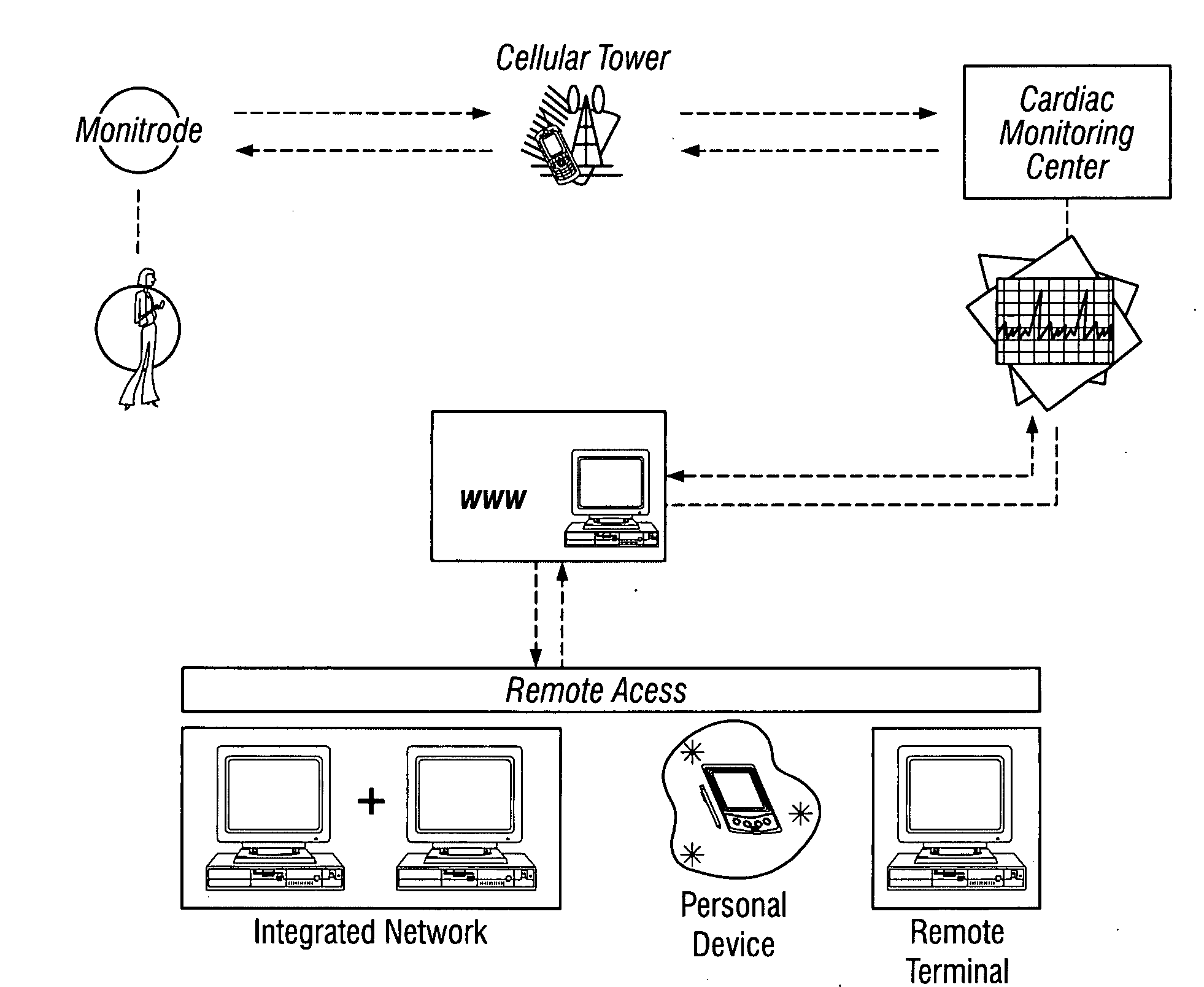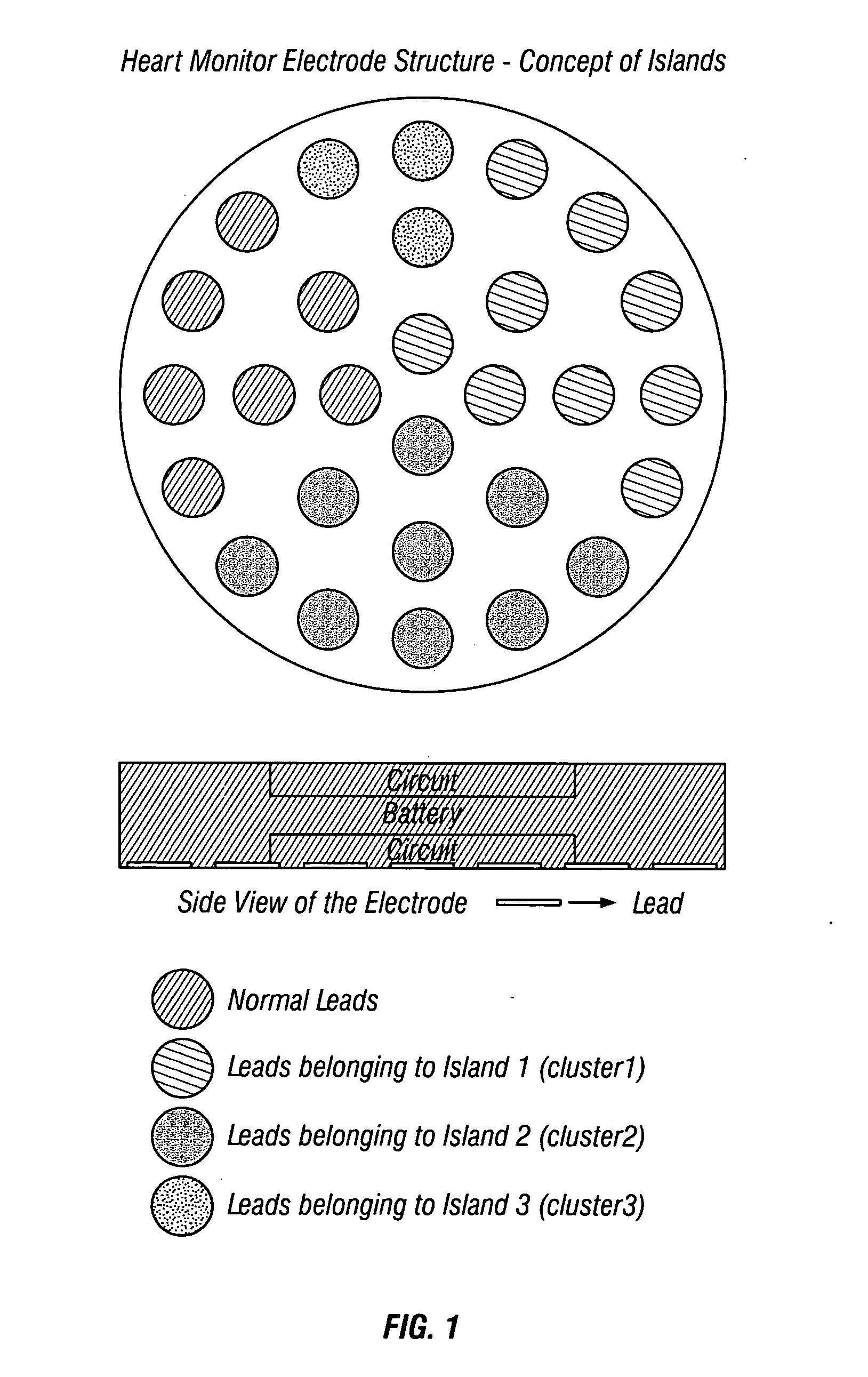Heart monitor electrode system
a monitoring system and heart monitor technology, applied in the field of biopotential sensory measurement and transmission, can solve the problems of limiting the proliferation and effectiveness of ecg monitoring systems in clinics, hospitals, emergency rooms,
- Summary
- Abstract
- Description
- Claims
- Application Information
AI Technical Summary
Benefits of technology
Problems solved by technology
Method used
Image
Examples
Embodiment Construction
[0022]1. As mentioned, rudimentary patches and electrode clusters for clinical electrocardiography have been proposed and described in the prior art. However, the prior art has not understood and correctly manipulated several major principals in bio-potential sensing paramount for sensitivity, spatial resolution, and correct and orientation of electrodes within clusters comprising sub-electrodes confined to a relatively small zone.
[0023]These principals are:
[0024](A) A single electrode sensor array used to spatially resolve highly localized gradient profiles from a cluster of sub-electrodes to form constituent sets comprising sub-electrodes under a specific decision rule. Such clusters will provide a minimum of two constituent, though not necessarily contiguous, sets obtained from members of the cluster to discern a measurable potential difference. See FIGS. 1 and 2.
[0025](B) A so-called “minimax” procedure that allows for bio-potential sensory acquisition through a digital steering...
PUM
 Login to View More
Login to View More Abstract
Description
Claims
Application Information
 Login to View More
Login to View More - R&D
- Intellectual Property
- Life Sciences
- Materials
- Tech Scout
- Unparalleled Data Quality
- Higher Quality Content
- 60% Fewer Hallucinations
Browse by: Latest US Patents, China's latest patents, Technical Efficacy Thesaurus, Application Domain, Technology Topic, Popular Technical Reports.
© 2025 PatSnap. All rights reserved.Legal|Privacy policy|Modern Slavery Act Transparency Statement|Sitemap|About US| Contact US: help@patsnap.com



